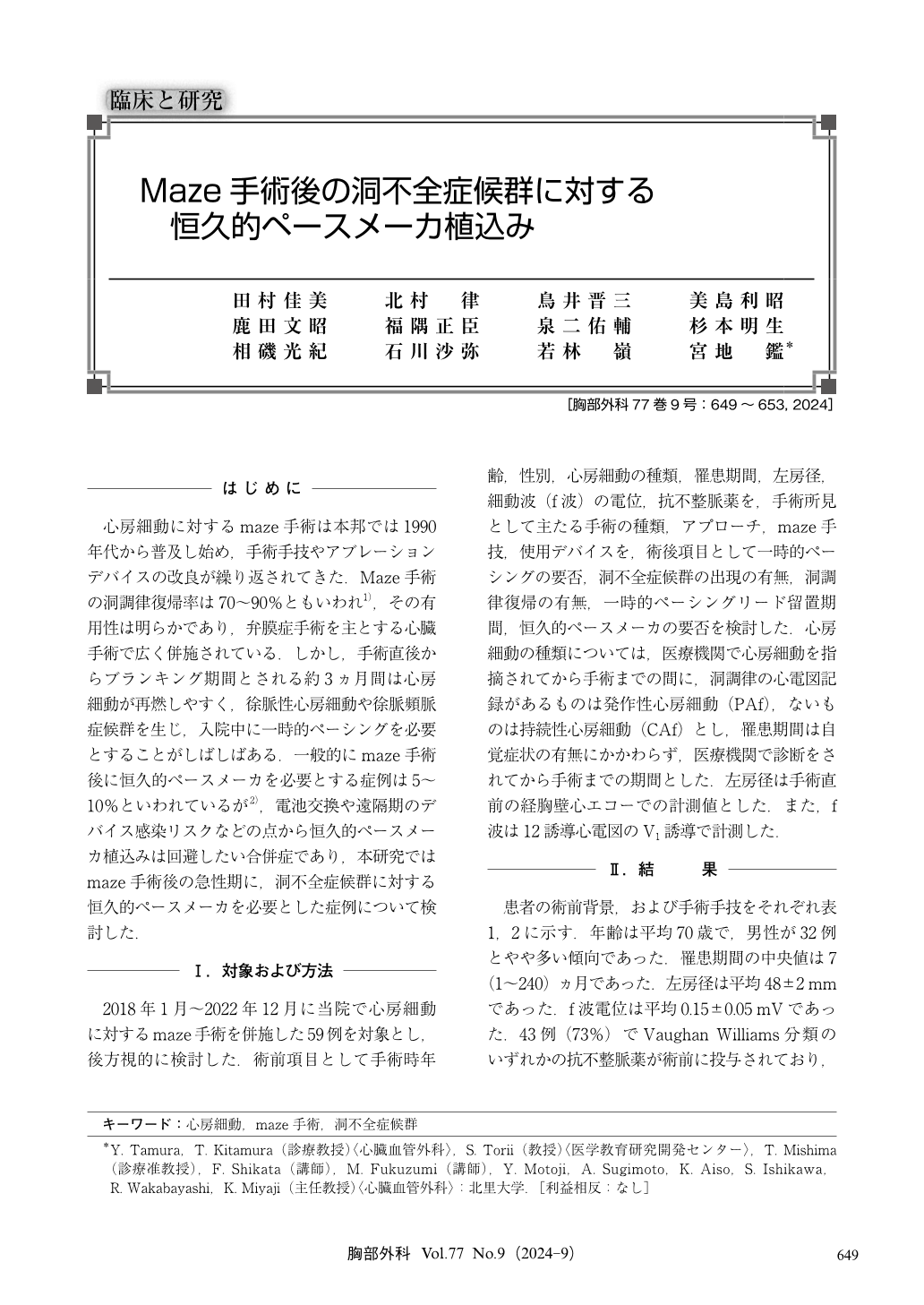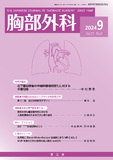Japanese
English
- 有料閲覧
- Abstract 文献概要
- 1ページ目 Look Inside
- 参考文献 Reference
心房細動に対するmaze手術は本邦では1990年代から普及し始め,手術手技やアブレーションデバイスの改良が繰り返されてきた.Maze手術の洞調律復帰率は70~90%ともいわれ1),その有用性は明らかであり,弁膜症手術を主とする心臓手術で広く併施されている.しかし,手術直後からブランキング期間とされる約3ヵ月間は心房細動が再燃しやすく,徐脈性心房細動や徐脈頻脈症候群を生じ,入院中に一時的ペーシングを必要とすることがしばしばある.一般的にmaze手術後に恒久的ペースメーカを必要とする症例は5~10%といわれているが2),電池交換や遠隔期のデバイス感染リスクなどの点から恒久的ペースメーカ植込みは回避したい合併症であり,本研究ではmaze手術後の急性期に,洞不全症候群に対する恒久的ペースメーカを必要とした症例について検討した.
Objectives:This study aimed to investigate incidence and risk factors for permanent pacemaker implantation for sick sinus syndrome (SSS) after maze procedure.
Methods:Medical records of 59 patients who underwent maze procedure for atrial fibrillation at our hospital from 2018 to 2022 were retrospectively reviewed.
Results:Mean age was 70 years and 32 patients (54%) were male. Major cardiac procedure was mitral valve surgery in 43 (72%). Radiofrequency ablation device was used in 35 (59%) and cryoablation was used in 24 (41%). Nineteen patients (32%) required temporary pacing after surgery;7 for type Ⅰ or Ⅱ SSS, 9 for type Ⅲ SSS and 3 for bradycardiac atrial fibrillation. Of these, all the 7 patients with type Ⅰ or Ⅱ SSS regained sinus rhythm, whereas 2 with type Ⅲ SSS underwent permanent pacemaker implantation. Overall, permanent pacemaker was implanted in 3 (5%). Forty-six patients (78%) were in sinus rhythm at the outpatient clinic after surgery.
Conclusions:Type Ⅰ or Ⅱ SSS after maze procedure is likely to resume sinus rhythm at the time of discharge whereas type Ⅲ is not. For type Ⅲ SSS after maze procedure, adequate anti-arrhythmic medication early after surgery may be required to avoid permanent pacemaker implantation.

© Nankodo Co., Ltd., 2024


